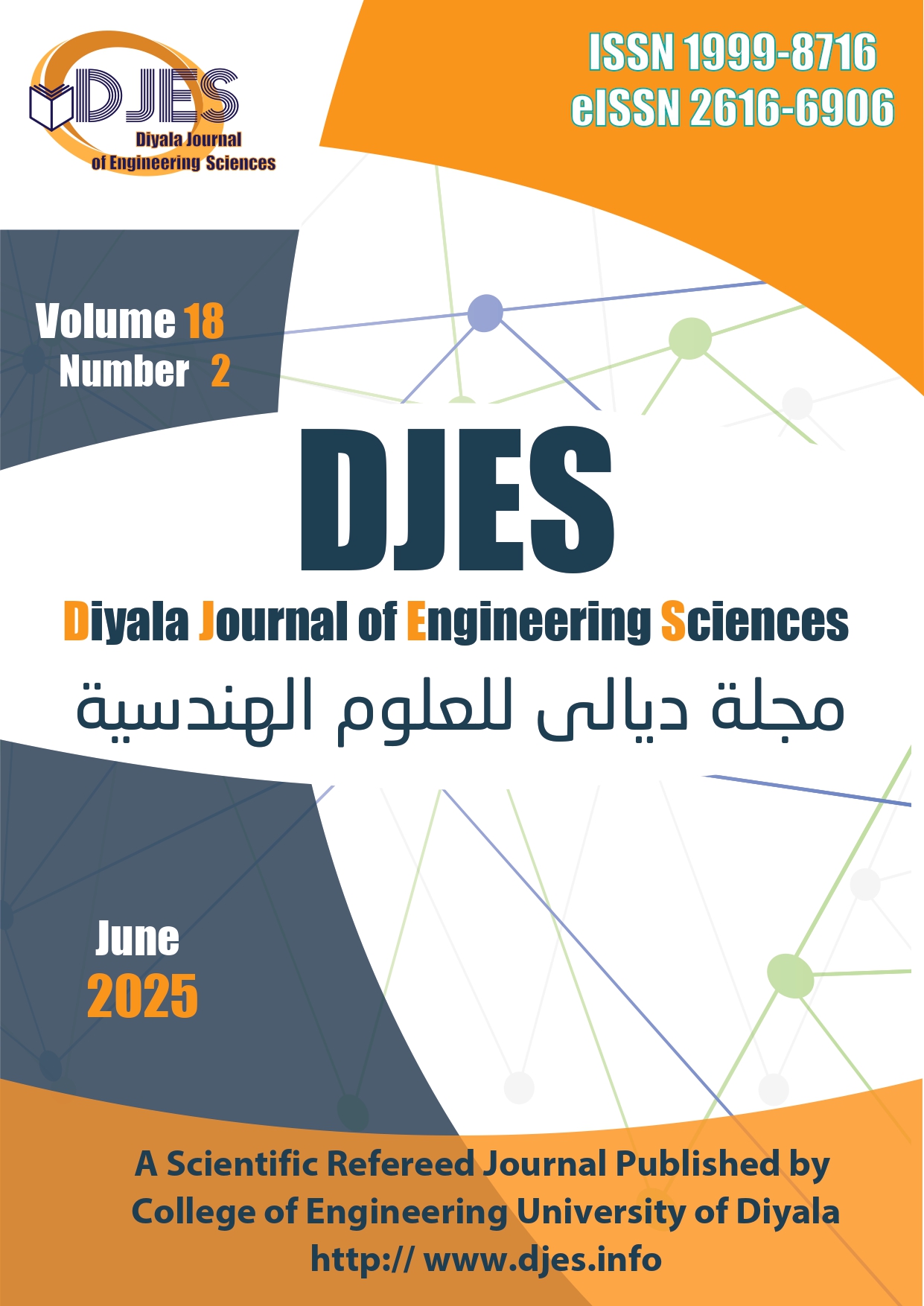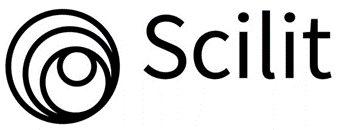FBMC and UFMC Multi-Waveform Design for 6G Wireless Networks
DOI:
https://doi.org/10.24237/djes.2024.18202Keywords:
5G, 6G, FBMC, UFMC, Multi-WaveformAbstract
The upcoming sixth-generation (6G) mobile is designed with several purposes, such as incredible improvements, ultra-fast speed, ultra-low latency, and massive connections within a small area. Bandwidth Efficiency and extensive coverage, besides sub-millisecond synchronization using a new sub-terahertz spectrum, are also considered. In order to maintain frame consistency, adapt to diverse applications, enable scalability, and minimize interferences, in 6G networks, a multi-waveform architecture is required instead of the individual waveform, which cannot meet the requirements. In this paper, a new approach to the waveform framework is presented. The proposed method integrates multi waveforms, referred to as (Waveforms Interfering). This approach combines two multicarrier schemes within a single frame, and then their performances are independently and collectively checked. The suggested approach has a Power Spectral Density (PSD) with minimal out-of-band radiation (OOBR) and a reduced guard band to 6 subcarriers between the two waveforms without causing interference. The Bit Error Rates (BER) performance compared among different orders of Quadrature Amplitude Modulation (QAM). The minimum BER achieved at 20dB SNR is 9e-7. This comparison reveals diverse performance outcomes based on the modulation orders used. The Peak Average Power Ratio (PAPR) behaves similarly to an individual scheme. This approach can effectively satisfy the strict performance requirements of 6G networks.
Downloads
References
[1] M. Banafaa, et al., "6G Mobile Communication Technology: Requirements, Targets, Applications, Challenges, Advantages, and Opportunities," Alexandria Engineering Journal, vol. 64, pp. 245–274, Feb 2023. DOI: [10.1016/j.aej.2022.08.017]
[2] Y. Xiaohu et al., "Towards 6G wireless communication networks: vision, enabling technologies, and new paradigm shifts," Science China Information Sciences, vol. 64, no. 1, pp. 1–74, Jan 2021. DOI: [10.1007/s11432-020-2955-6]
[3] Y. Ahmet and A. Hüseyin, "A Waveform Parameter Assignment Framework for 6G With the Role of Machine Learning," IEEE Open Journal of Vehicular Technology, vol. 1, pp. 156–172, May 2020. DOI: [10.1109/OJVT.2020.2992463]
[4] O. M. Salih and A. I. Siddiq, “A Low Complexity Slm Scheme for Papr Reduction of OFDM Signals”, DJES, vol. 10, no. 3, pp. 63–74, Sep 2017. DOI:
10.24237/djes.2017.10306
[5] H. Tataria et al., "6G Wireless Systems: Vision, Requirements, Challenges, Insights, and Opportunities," Proceedings of the IEEE, vol. 109, no. 7, pp. 1166–1199, May 2021. DOI: [10.1109/JPROC.2021.3061701]
[6] Asghar et al., "Evolution of Wireless Communication to 6G: Potential Applications and Research Directions," Sustainability, vol. 14, no. 10, p. 6356, May 2022. DOI: [10.3390/su14106356]
[7] A. Dogra et al., " A Survey on Beyond 5G Network With the Advent of 6G: Architecture and Emerging Technologies," IEEE Access, vol. 9, Oct 2020, pp. 67512–67547. DOI: [10.1109/ACCESS.2020.3025710]
[8] A. Yazar et al., “6G vision: An ultra-flexible perspective,” ITU Journal on Future and Evolving Technologies, vol. 1, no. 1, pp. 121–40, Dec 2020. DOI: [10.52953/ILVJ2571]
[9] A. M. Ahmed, S. A. Majeed, and S. A Hasan, “Non-Terrestrial Networks Based on Non-Orthogonal Multiple Access Towards 6G”, DJES, vol. 17, no. 2, pp. 1–26, Jun. 2024. DOI: 10.24237/djes.2024.17201
[10] A. M. Ahmed, S. A. Majeed, and Y. S. Dawood, “A Survey of 6G Mobile Systems, Enabling Technologies, and Challenges,” International Journal of Electrical and Electronic Engineering & Telecommunications, vol. 12, no. 1, Jan 2023. doi: 10.18178/ijeetc.12.1.1-21
[11] Yazar, Ahmet, et al. "6G Vision: An Ultra-Flexible Radio Access Technology Perspective." arXiv: Signal Processing (2020): n. pag.
[12] Dia M. Ali and Zhraa Zuheir Yahya, "5G F-OFDM Waveform Based Software-Defined Radio Technology," Proceedings of Engineering and Technology Innovation, vol. 20, pp. 68–80, Jan 2022. DOI: 10.46604/peti.2022.8887
[13] M. S. Noorazlina, S. M. Sulong, A. Idris, M. S. M. Saidو I. Ahmad, "Design of MIMO F-OFDM System Model for PAPR Reduction in the Growth of 5G Network", Journal of Physics. Conference Series (Online), vol. 1793, no. 1, p.7, Feb. 2021. doi: 10.1088/1742-6596/1793/1/012067.
[14] Dia M. Ali and Zhraa Zuheir Yahya, “Flexible Sub-bands F-OFDM Configured for Spectrum Efficiency Enhancement in 5G System," Journal of Communications, vol. 17, no. 3, pp. 203–209, Mar 2022. doi:10.12720/jcm.17.3.203-209
[15] Dia M Ali, Zhraa Zuheir Yahya, and Younis M Abbosh, “OTFS Waveform Effectiveness in 6G Communication Networks,” International Journal of Microwave and Optical Technology, vol. 18, no. 1, pp. 1–6, Jan 2023.
[16] A. Adoum, et al., "A Comprehensive Survey of Candidate Waveforms for 5G, beyond 5G and 6G Wireless Communication Systems," Open Journal of Applied Sciences, vol. 13, no. 1, pp. 136–61, Jan 2023.
[17] S. P. Yadav, "Filter Bank Multicarrier Modulation Techniques for 5G and Beyond Wireless Communication Systems,” European Journal of Electrical Engineering and Computer Science, vol. 6, no. 2, pp.18–24, Mar 2022. DOI:10.24018/ejece.2022.6.2.423
[18] I. Galdino et al., "Short Prototype Filter Design for OQAM-FBMC Modulation," IEEE Transactions on Vehicular Technology, vol. 69, no. 8, pp. 9163–9167, Jun 2020. DOI: [10.1109/TVT.2020.2992463]
[19] A. Madhusudhan and S. K. Sharma, "Selective mapping scheme for universal filtered multicarrier," Intelligent Automation & Soft Computing, vol. 36, no.2, pp. 1273–1282, Jan 2023. DOI: 10.32604/iasc.2023.030765
[20] I. Galdino Andrade et al., "Short-Filter Design for Intrinsic Interference Reduction in QAM-FBMC Modulation," IEEE Communication Letters, vol. 24, no. 7, pp. 1487–1491, Mar 2020. DOI: [10.1109/LCOMM.2020.2992463]
[21] M. Gupta et al., "Comparative Study on Implementation Performance Analysis of Simulink Models of Cognitive Radio Based GFDM and UFMC Techniques for 5G Wireless Communication,” Wireless Personal Communications, vol. 126, pp. 1–31, Sep 2020. DOI: [10.1007/s11277-020-07788-1]
[22] F. M. Lopes, and J. C. Ferreira, “Flexible Baseband Modulator Architecture for Multi-Waveform 5G Communications,” Field Programmable Gate Arrays (FPGAs) II,1st ed., IntechOpen, 2020, ch. 3. [Online]. Available: https://www.intechopen.com/books/8360.
[23] K. Imane et al., “UFMC Waveform and Multiple-Access Techniques for 5G RadCom,” Electronics, vol. 10, no. 7, p. 849, Apr 2021. DOI: [10.3390/electronics10070849]
[24] S. Lambros et al., "5G UFMC Scheme Performance with Different Numerologies" Electronics, vol. 10, no. 16, p. 1915, Aug 2021. DOI: [10.3390/electronics10161915]
[25] B. Ramakrishnan et al., “Analysis of FBMC Waveform for 5G Network Based Smart Hospitals,” Applied Sciences, vol. 11, no. 19, p. 8895, Sep 2021. DOI: [10.3390/app11198895]
[26] A. Adarsh et al., “Low-latency and High-Reliability FBMC Modulation scheme using Optimized Filter design for enabling NextG Real-time Smart Healthcare Applications,” The Journal of Supercomputing, vol. 79, pp. 3643–3665, Mar 2023. DOI: [10.1007/s11227-023-05123-4]
[27] V. O. Varlamov et al., “Investigation of FBMC-OQAM Equalization with Real Interference Prediction Algorithm Properties for MIMO Transmission Scheme,” Sensors, vol. 23, no. 4, p. 2111, Feb 2023. DOI: [10.3390/s23042111]
[28] S. Debnath, S. Ahmed, S. S. Alam, “Analysis of filtered multicarrier modulation techniques using different windows for 5G and beyond wireless systems,” Wireless Communications and Mobile Computing, vol. 2024, no 1, p. 9428292, Mar 2024. DOI: [10.1155/2024/9428292]
Downloads
Published
Issue
Section
License
Copyright (c) 2025 Zhraa Zuheir Yahya, Dia M. Ali, Younis Abbosh

This work is licensed under a Creative Commons Attribution 4.0 International License.












